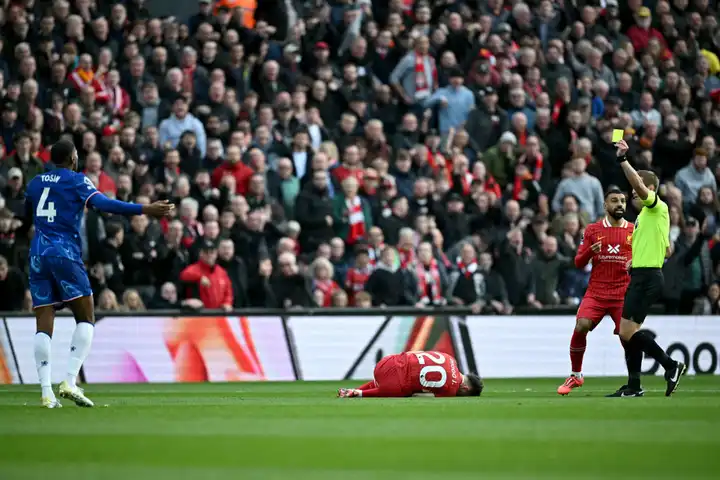Arsenal fans were left fuming after Chelsea defender Tosin Adarabioyo escaped a red card for more or less the same offence that William Saliba was sent off for.
The Gunners were forced to play with 10 men against Bournemouth on Saturday after Saliba received his marching orders for a last-man challenge on Evanilson.
24 hours later, there was a repeat incident at Anfield when Adarabioyo hauled down Diogo Jota when Chelsea travelled North to face Liverpool.
Referee John Brooks showed the former Fulham defender a yellow card, much to the disappointment of the raucous home crowd. The incident was checked and quickly cleared by VAR who was satisfied with the booking.
So, what was the thinking process behind the two similar situations yet different outcomes for the perpetrators?
Both offences were judged as last-man offences, which, more often than not, results in the denial of a goal-scoring opportunity....Read Full Article [Click Here>]
As captured in the Laws of the Game, officials must consider several factors before deciding whether to send a player off: the distance between the offence and the goal, the general direction of the play, the likelihood of keeping or gaining control of the ball, and the location and number of defenders.
Starting with Saliba’s incident, there was no retreating defender to provide cover. Ben White was on the right with the officials ruling that he couldn’t have come back on time. While Saliba brought down Evanilson way further up the pitch, there was an inclination that the goal was right ahead of him with total control of the ball.
https://twitter.com/i/status/1848032157916164518
Adarabioyo’s case was slightly different. The England international fouled Jota in Liverpool’s half. Levi Colwill was also close by to provide cover. So, while Adarabioyo’s foul was just as clumsy as Saliba’s, the Chelsea man was bailed out by the defenders around him.
Liverpool ran out 2-1 victors with Mohamed Salah scoring a penalty before setting up Curtis Jones’ either side of a Nicolas Jackson equaliser.





